-
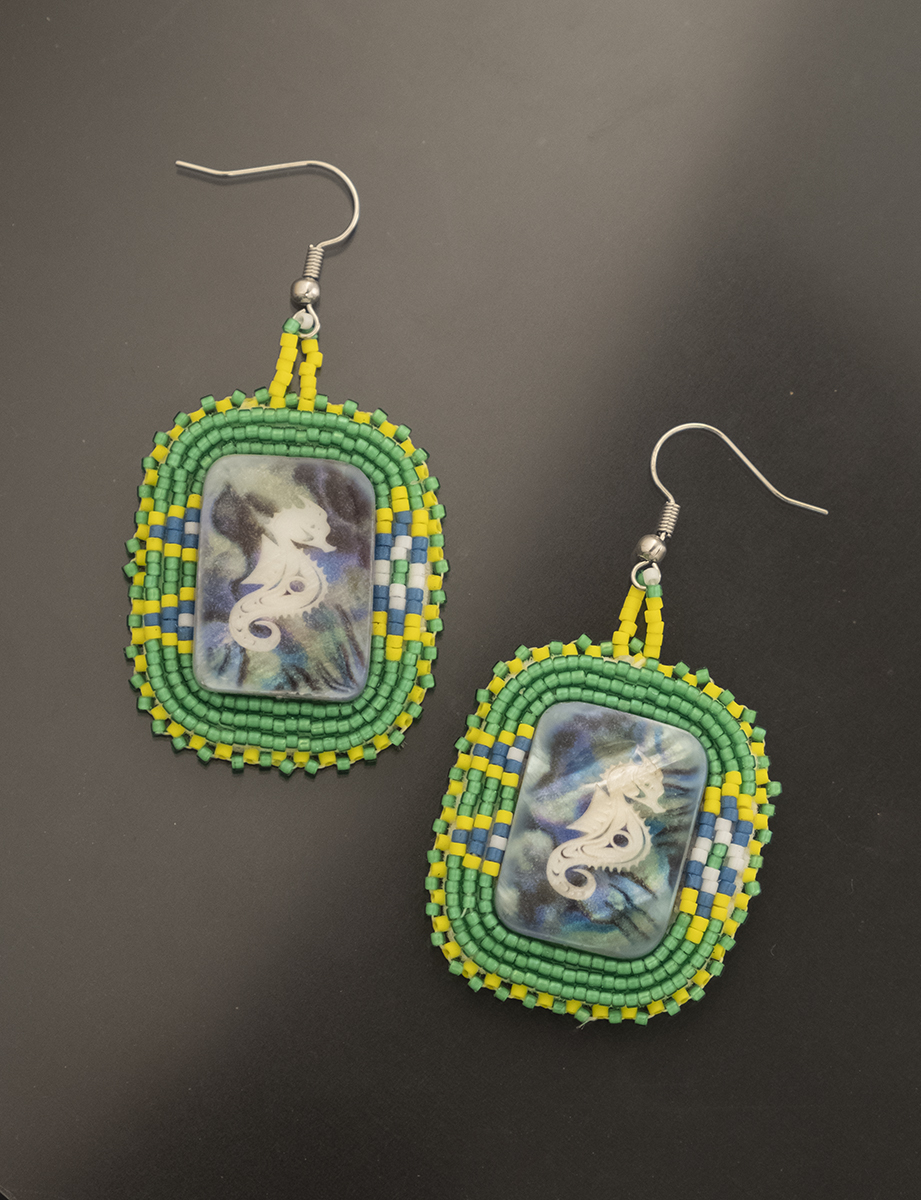 Seahorse EarringsLaser Etched Abalone, BeadsSOLD
Seahorse EarringsLaser Etched Abalone, BeadsSOLD -
 Frog and Moon Necklace and Earring SetLaser Etched Abalone, BeadsSOLD
Frog and Moon Necklace and Earring SetLaser Etched Abalone, BeadsSOLD -
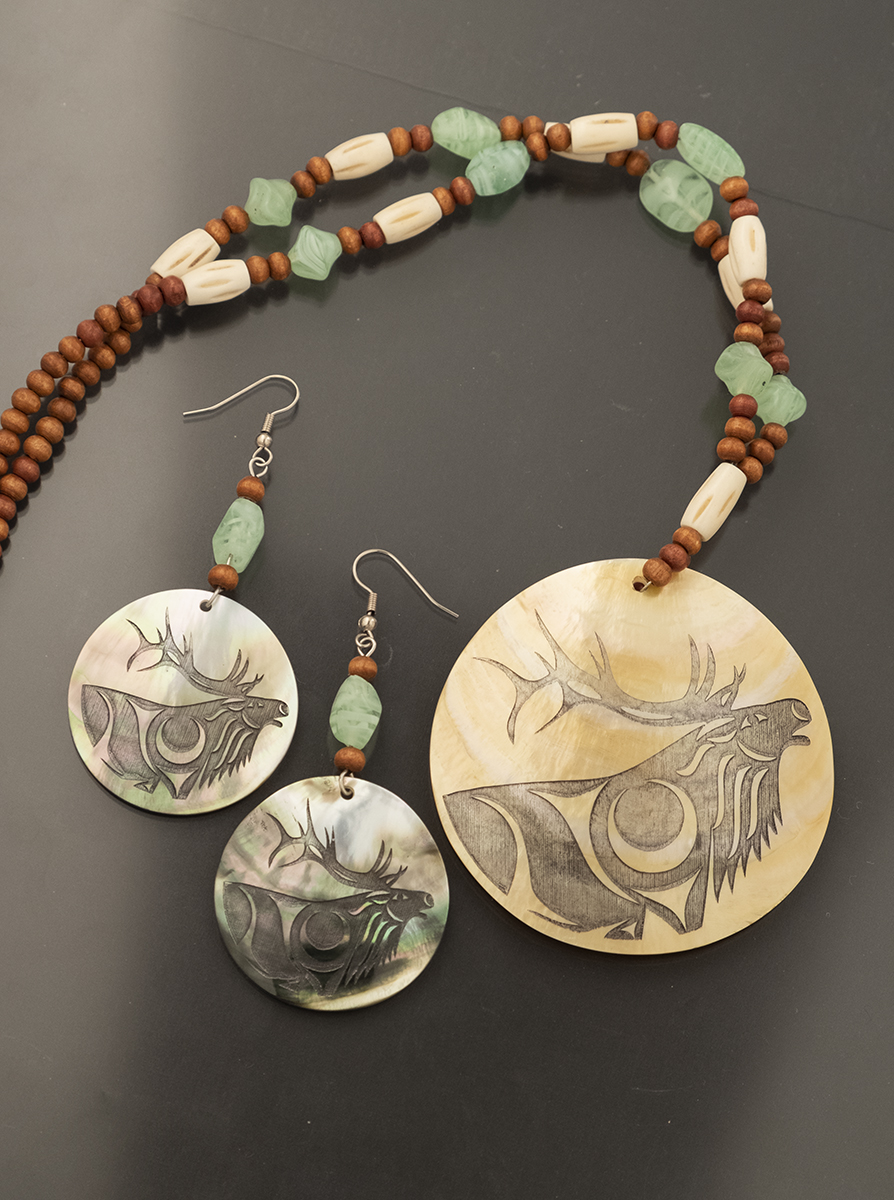 Elk Necklace and Earring SetLaser Etched Abalone, BeadsSOLD
Elk Necklace and Earring SetLaser Etched Abalone, BeadsSOLD -
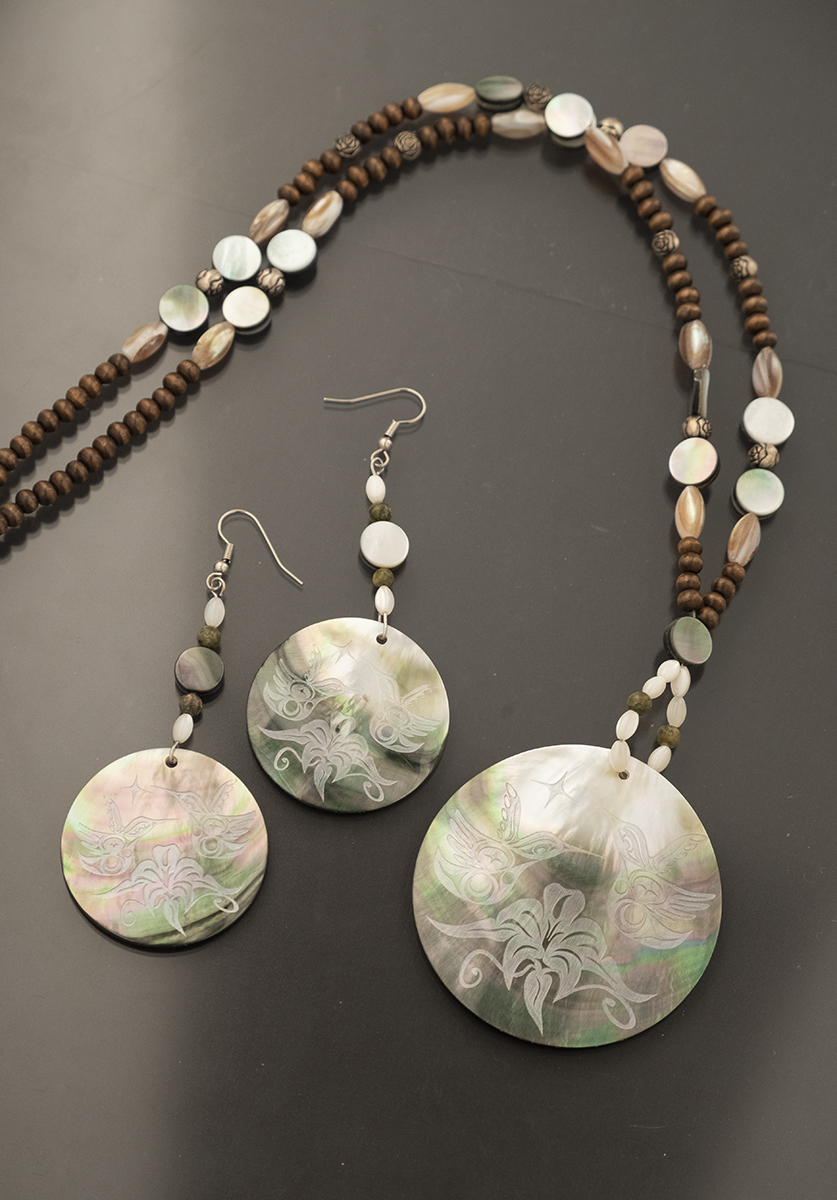 Hummingbird Necklace and Earring SetLaser Etched Abalone, BeadsSOLD
Hummingbird Necklace and Earring SetLaser Etched Abalone, BeadsSOLD -
 Guardian Necklace and Earring SetLaser Etched Abalone, BeadsSOLD
Guardian Necklace and Earring SetLaser Etched Abalone, BeadsSOLD -
 Dogwood Flower Spindle WhorlCarved Maple Wood
Dogwood Flower Spindle WhorlCarved Maple Wood- 12"h
- 16"w
- 14.5"d
SOLD -
 New Beginnings – Spindle WhorlStained Maple
New Beginnings – Spindle WhorlStained Maple- 15.75"h
- 15.75"w
- 12"d
SOLD -
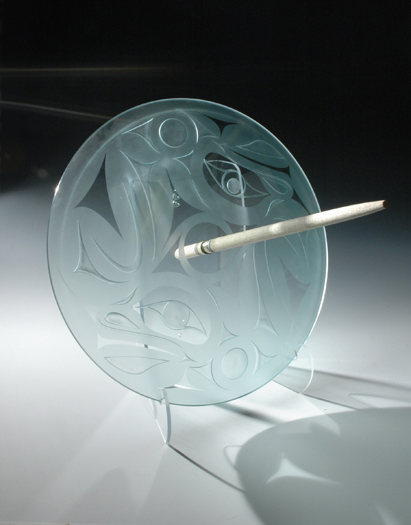 Seals Spindle WhorlEtched Glass
Seals Spindle WhorlEtched Glass- 20"h
- 20"w
- 19"d
SOLD -
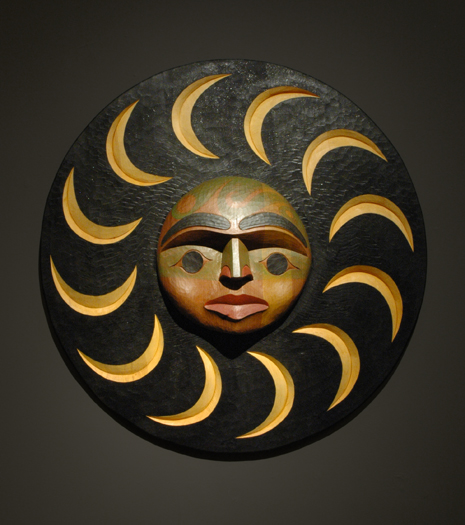 Crescent MoonsRed Cedar, Yellow Cedar, Acrylic
Crescent MoonsRed Cedar, Yellow Cedar, Acrylic- 27.25"h
- 27.25"w
- 5"d
SOLD -
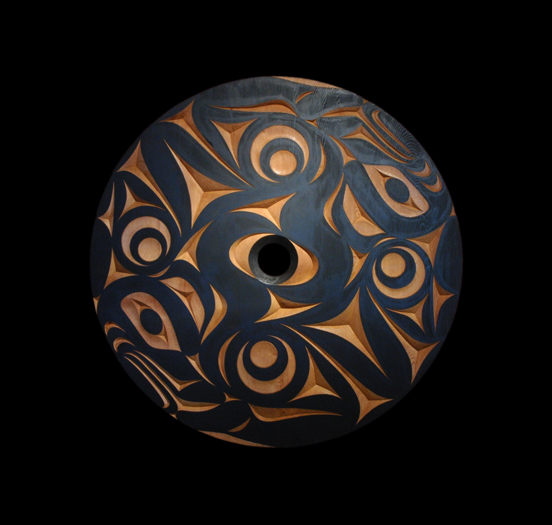 IntertwinedRed Cedar, Acrylic
IntertwinedRed Cedar, Acrylic- 42"h
- 42"w
- 1"d
SOLD
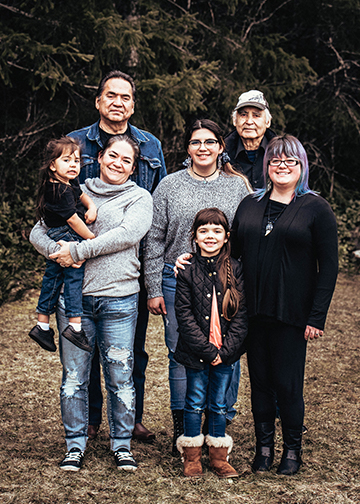 Tribal Enrollment Number: C-477
Tribal Enrollment Number: C-477
Andrea Wilbur-Sigo lives in Shelton, Washington where she was born in 1975 and is a member of the Squaxin Island Tribe. She is the great-great granddaughter of Henry Allen who was the major historical and cultural informant for an ethnographic study of the Twana people. Also she is the great-granddaughter of Andrew Peterson, grand-daughter of Bert Wilbur and Dennis Allen of which all are carvers. Most importantly she is the mother of four wonderful children.
Andrea is the first known woman carver of many generations of carvers. She grew up with many types of art around her. She started out with beadwork and has since spent her time studying and carving in the Coast Salish style art forms including bentwood boxes, masks, panels, button blankets, drums, baskets, and most recently began weaving in wool.
Her artistic life began from day one surrounded by an artistic community that included elders such as Lousia Pulsifer, Emily Miller, Andrew Peterson, Bertha Visser, and her grandfathers Bert Wilbur and Dennis Allen. She has recently worked with well-known carvers such as Dempsey Bob, Ed Archie Noisecat, David Boxely, Pete Peterson, Joe and George David, Art Oomituk, and Loren White. Andrea is continually researching and applying her knowledge to her art forms today.
Andrea did her first show in December 1997 then in May 1998, she participated in the First Annual Indian Art Northwest show in Portland Oregon where she took 1st place and Honorable Mention. Andrea has continued to place in every show thereafter.
Andrea’s attention to detail and unique approach to each piece has made her work sought after by galleries, museums, and collectors throughout United States, Canada and Europe.
Andrea is an active member of her tribe, volunteering her time and artwork for a number of community events and committees such as the Education committee and is a board member of her Tribal Museum. She also teaches Coast Salish art classes on a regular basis to children and adults of all ages.
Artists Statement
“When creating works such as these there is a high power involved. I’ve been an artist my entire life. At the age of three, I was creating beadwork and selling it worldwide by the age of eight. Not only did I do beadwork but I was also studying design in the northern style from books and museums. With those designs I created paintings in all kinds of mediums. Back then in the late seventies and early eighties I was lucky enough to have several elders to learn from. As a small child, a big part of my life was spending a lot of time with these elders learning sewing from Kia-Ma Bertha Visser-Allen, weaving from Bruce Miller, fishing from my grandpas Bert Wilbur and Andrew Peterson and many more elders who also had a huge impact on my life. There isn’t a day when I don’t talk to all of these loved ones and have them show me the way.
In 1993, when my oldest daughter was a year old and I was eighteen, I decided it was now time to carve. I always knew this was where life was leading me; I was just waiting for the time to come. Members of my family have always been carvers, and I know something or someone led me here to create and educate people in the most rewarding way. In the mid nineties I met my husband and partner, who is also a Squaxin Island tribal member; he too comes from a long line of carvers. So it is just in our nature and blood to create these pieces. We are both Salish, as are all seven of our children ranging in ages from twenty-one to two years old; so we have spent a lot of time researching our old pieces and creating new pieces in the Salish art form.
Not only is there a high power leading me along my life’s path, but this is just a way of life for my family being Native. It is so much more than anyone could put into words. To create pieces such as these you need to know so much more about things such as the environment and current issues.
Without our surroundings we are nothing. You must know where you come from and who you belong to and Family is the most important thing. Without this I would be lost. I personally study every aspect of who I am, where I come from and where my children will be going. Like I say, putting this into words is impossible for someone who cares as deeply as I do. This is a small insight into how I create the monumental pieces I’ve created. My entire soul creates these pieces. I get my ideas day and night, awake and in my dreams; they are given to me to create. This is my life. My children too are artists and have already started on their life’s journey. That is what it is all about…our children.”
